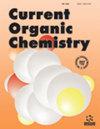吡唑喹啉衍生物合成方法的最新进展(第一部分)
IF 2.1
3区 化学
Q3 CHEMISTRY, ORGANIC
引用次数: 0
摘要
本综述的重点是不同类型吡唑喹啉衍生物的合成路线。合成方法有三种:i) 从吡唑衍生物;ii) 从喹啉衍生物;iii) 其他方法。吡唑和喹啉环之间的连接位置决定了吡唑并喹啉的七种异构体。本综述旨在为合成化学家和药物化学家发现和设计新的吡唑喹啉类药物提供指导。本文章由计算机程序翻译,如有差异,请以英文原文为准。
Recent Progress in the Synthetic Methods of Pyrazoloquinoline Derivatives (Part I)
The focus of this review is on the synthetic routes available for different types of pyrazoloquinoline derivatives. There are three types of synthetic methods: i) from pyrazole derivatives; ii) from quinoline derivatives; and iii) miscellaneous methods. The position of the linkage between pyrazole and quinoline rings determines the seven isomers of pyrazoloquinolines. The purpose of this review is to provide a guide for both synthetic and medicinal chemists to discover and design new pyrazoloquinolines for medical purposes.
求助全文
通过发布文献求助,成功后即可免费获取论文全文。
去求助
来源期刊

Current Organic Chemistry
化学-有机化学
CiteScore
3.70
自引率
7.70%
发文量
76
审稿时长
1 months
期刊介绍:
Current Organic Chemistry aims to provide in-depth/mini reviews on the current progress in various fields related to organic chemistry including bioorganic chemistry, organo-metallic chemistry, asymmetric synthesis, heterocyclic chemistry, natural product chemistry, catalytic and green chemistry, suitable aspects of medicinal chemistry and polymer chemistry, as well as analytical methods in organic chemistry. The frontier reviews provide the current state of knowledge in these fields and are written by chosen experts who are internationally known for their eminent research contributions. The Journal also accepts high quality research papers focusing on hot topics, highlights and letters besides thematic issues in these fields. Current Organic Chemistry should prove to be of great interest to organic chemists in academia and industry, who wish to keep abreast with recent developments in key fields of organic chemistry.
 求助内容:
求助内容: 应助结果提醒方式:
应助结果提醒方式:


